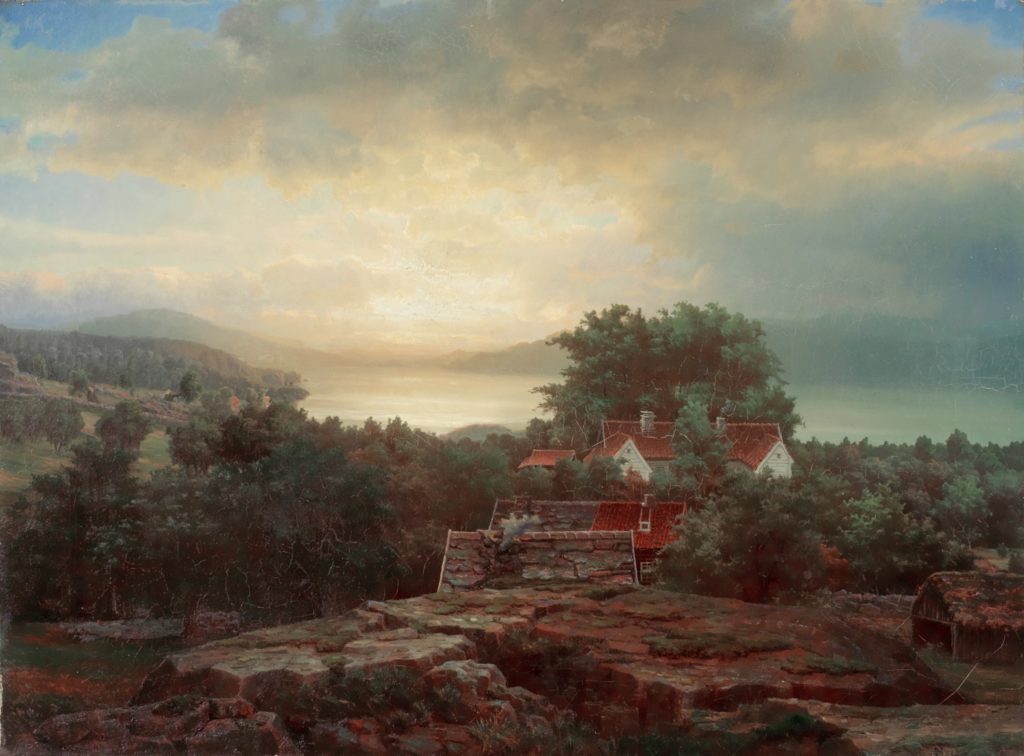Evening

Lars Hertervig (1830-1902) was born on the island of Borgøya in Tysvær on the southwest coast of Norway but his family soon moved to Stavanger. Hertervig demonstrated artistic talent early on and, thanks to generous help from the city’s more privileged citizens, he was given the opportunity to study both in the capital Christiania and abroad. At the age of 22 Hertervig travelled to Düsseldorf and received private lessons from the famous Norwegian Romantic painter Hans Gude. Here he developed quickly as a landscape painter and Gude remarked that he expected greater things of Lars Hertervig than of any of his other students. After a few years in Düsseldorf Hertervig became ill; he became morbidly suspicious of his colleagues and was tormented by hallucinations. In 1854 his health deteriorated even more and Hertervig became so ill that he decided to return to Norway. He suffered from illness more or less for the remainder of his life and lived increasingly isolated from professional art circles.
Lars Hertervig became known primarily as a landscape painter and devoted himself to the nature of Southwest Norway in particular. Exploring the effects of light on its surroundings and depicting nature under diverse atmospheric conditions seem to be essential themes of his art. Despite the fact that Lars Hertervig’s unique visionary landscapes have often been interpreted in the light of biographical circumstances, it is difficult to pinpoint any real effect of illness on his art. Up until the mid-1850s he worked in a rather classical ‘Düsseldorf’, romantic landscape tradition with emphasis on subdued colour tones and strong contrasts. Evening (1855-56) is a characteristic example of this period in his career. From the middle of the 1860s light gained and increasingly important place in his work and the previously dark colouration gave way to a purer and clearer palette. Although he developed a unique, characteristic style, Hertervig remained true to observed reality and portrayed nature as he saw it throughout his career.
OWG